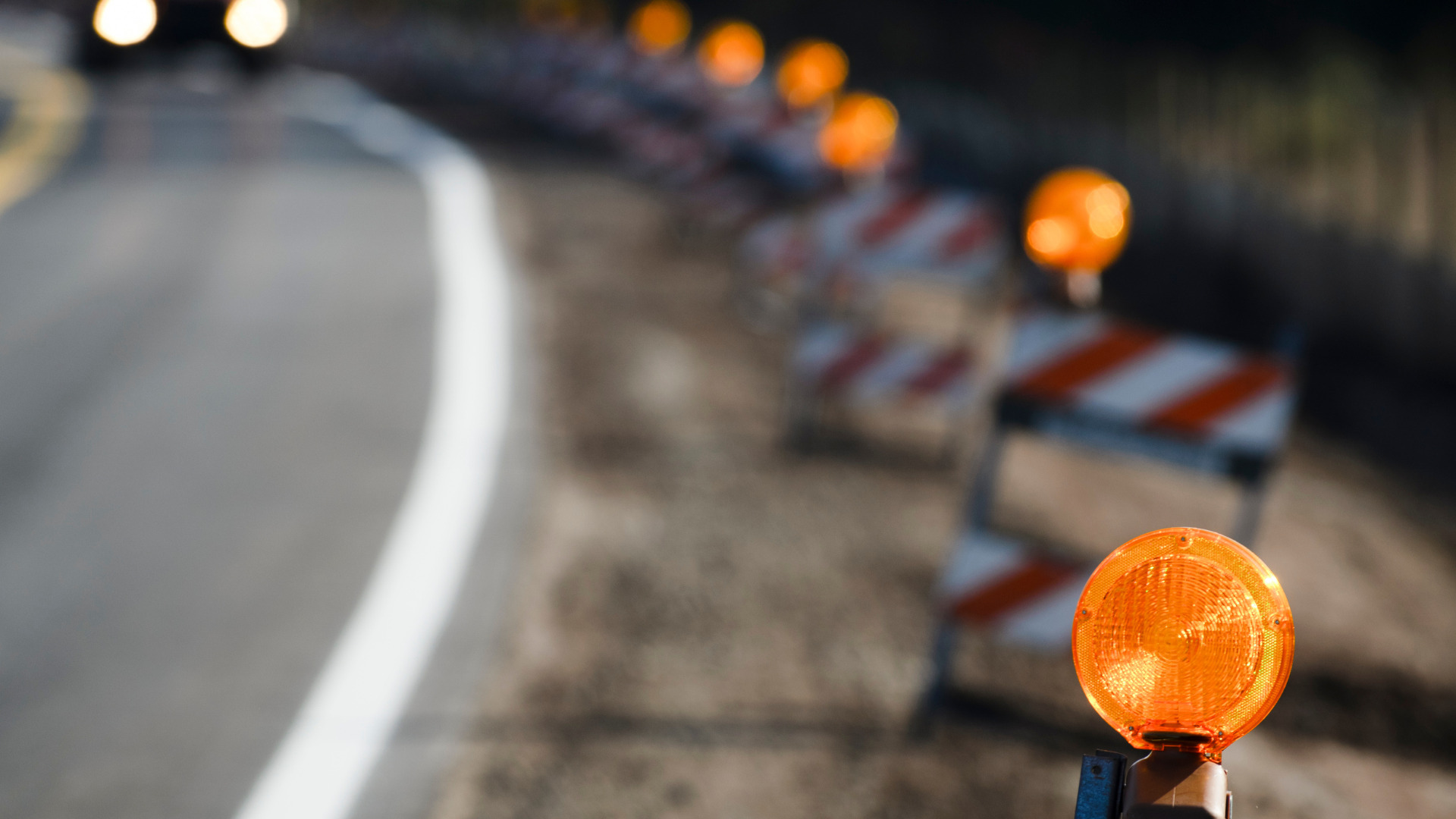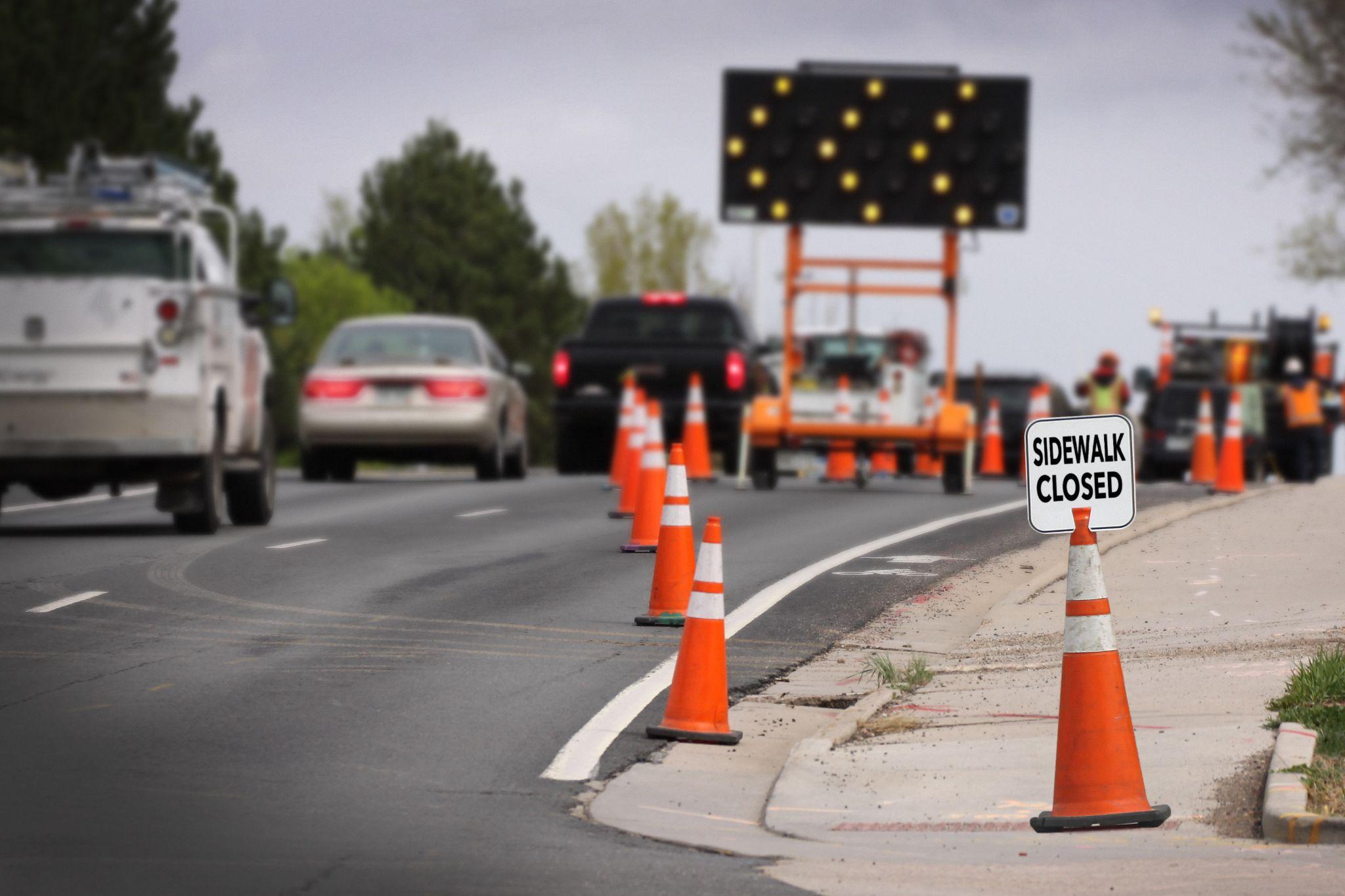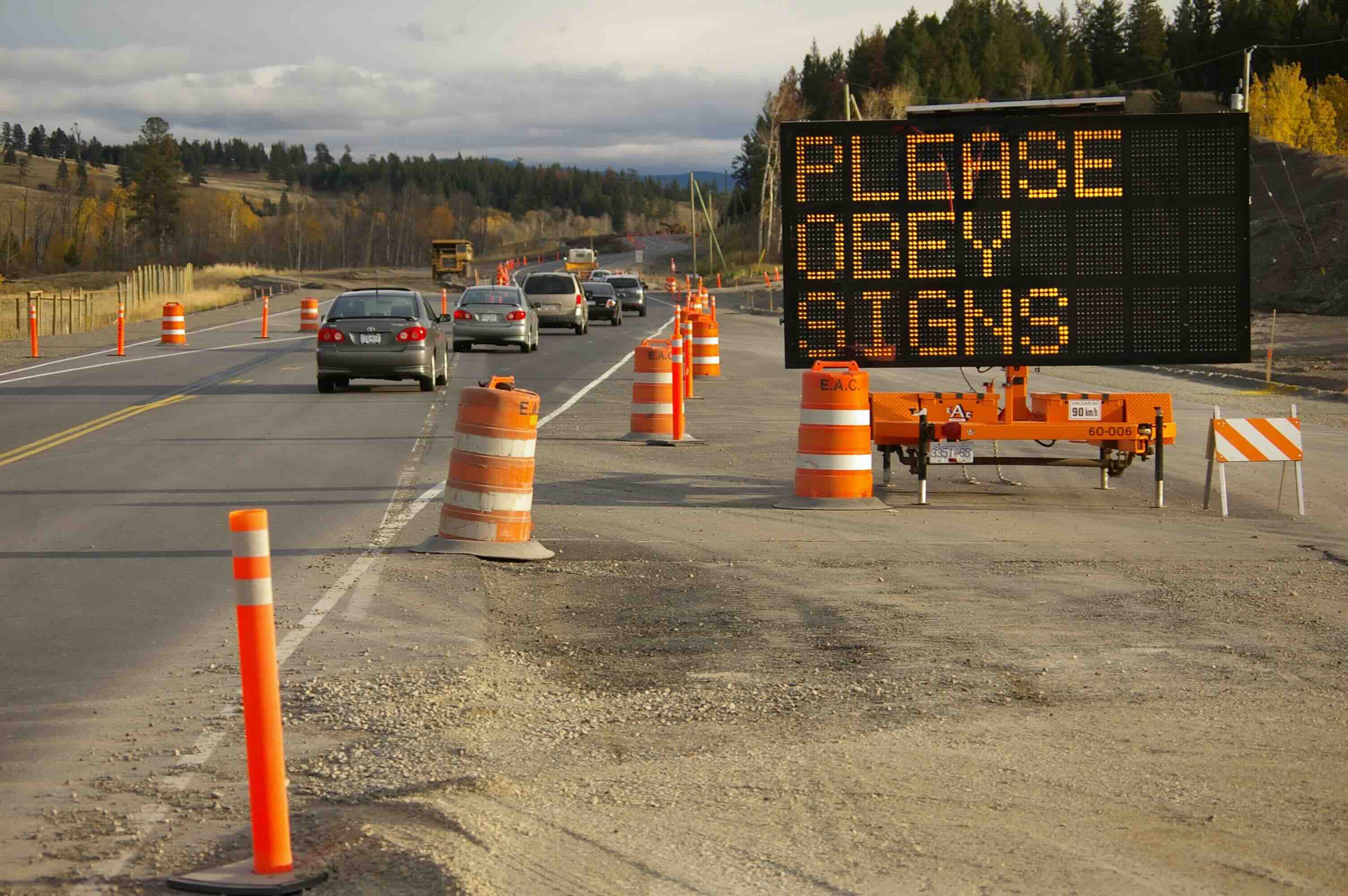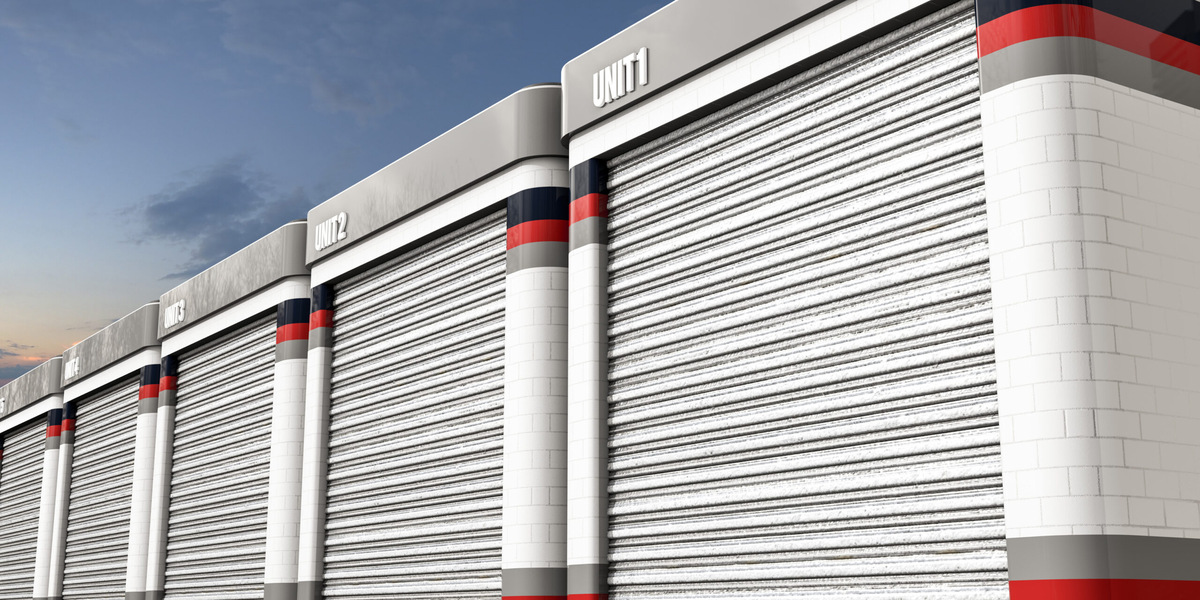Home>diy>Building & Construction>How To Avoid Traffic Fines In Construction Zones


Building & Construction
How To Avoid Traffic Fines In Construction Zones
Modified: December 7, 2023
Find out why traffic fines double in construction zones when building-construction is taking place, and how you can stay safe and avoid penalties.
(Many of the links in this article redirect to a specific reviewed product. Your purchase of these products through affiliate links helps to generate commission for Storables.com, at no extra cost. Learn more)
Introduction
Driving through construction zones can be frustrating and time-consuming. The constant lane closures, reduced speed limits, and detours can test the patience of even the calmest drivers. However, it is essential to recognize the importance of construction zones in maintaining and improving our infrastructure.
Construction zones are areas of the road where repair, expansion, or maintenance work is being done to highways, bridges, or other transportation infrastructure. They are marked by signage, traffic cones, and barriers to ensure the safety of both workers and drivers. These zones are not only crucial for the development of road networks but also have a significant impact on public safety.
One critical factor in ensuring safety in construction zones is traffic fines. Traffic fines are penalties imposed on drivers for violating traffic laws and regulations. They serve as a deterrent, promoting responsible driving and reducing the number of accidents and injuries on the road.
However, in recent years, there has been a growing concern about the increasing number of violations and accidents in construction zones. To address this issue and emphasize the importance of safety in these areas, many jurisdictions have implemented a policy of doubling traffic fines in construction zones.
This article will explore the factors contributing to increased traffic fines in construction zones, the implementation of the double fine policy, its impact on driver behavior, as well as a statistical analysis of traffic fines in construction zones. Additionally, we will address criticisms and concerns regarding double fines, and provide recommendations for improving road safety in construction zones.
Ultimately, the aim of this article is to shed light on the significance of traffic fines in construction zones and highlight the importance of responsible driving to ensure the safety of both construction workers and motorists.
Key Takeaways:
- Double fines in construction zones serve as a powerful deterrent, promoting responsible driving, protecting workers, and maintaining traffic flow for a safer and more efficient transportation network.
- Implementing the double fine policy requires clear communication, public awareness campaigns, enhanced enforcement, and collaboration to effectively improve driver behavior and ensure the safety of construction workers and motorists.
Read more: How To Avoid Hazards On A Construction Site
Definition of Construction Zones
Construction zones are designated areas where road construction or maintenance work is taking place. These zones are typically marked by signs, barricades, cones, and flaggers to alert drivers of the ongoing construction activities and any associated changes in traffic flow.
Construction zones can involve a wide range of projects, including road resurfacing, bridge repairs, utility installations, and highway expansion. They are essential for improving and maintaining the infrastructure that supports our transportation system.
Within a construction zone, there may be temporary changes to the road layout, such as lane closures, reduced speed limits, detours, and narrowed lanes. These changes are implemented to create a safe working environment for construction crews and to ensure the safety of drivers passing through the area.
Construction zones can vary in size and duration depending on the scope of the project. Some construction zones cover a short stretch of road, while others may extend for miles. The duration of a construction zone can range from a few days to several months or even years, depending on the complexity of the project.
When traveling through a construction zone, it is crucial for drivers to be alert and follow any posted signs and instructions. Adhering to reduced speed limits and being mindful of changing traffic patterns can help prevent accidents and ensure the safety of both drivers and construction workers.
It is important to note that construction zones can pose additional risks to drivers, such as uneven road surfaces, loose gravel, and temporary changes in traffic flow. Therefore, drivers should exercise caution and remain vigilant while navigating through these areas.
Overall, construction zones are temporary areas where infrastructure improvements are taking place. They play a vital role in maintaining and upgrading our transportation network, and it is important for drivers to be aware of and follow the guidelines and regulations set forth in these zones to ensure the safety of all road users.
Importance of Traffic Fines in Construction Zones
Traffic fines have a crucial role to play in ensuring safety in construction zones. These fines serve as a deterrent, encouraging drivers to adhere to traffic laws and regulations, thereby reducing the risk of accidents and injuries in these areas.
One of the primary reasons for implementing traffic fines in construction zones is to protect the safety of construction workers. Construction zones are dynamic environments with heavy machinery, workers on foot, and various hazards. When drivers ignore posted signs, drive recklessly, or exceed speed limits, they put the lives of construction workers at risk.
By imposing traffic fines, authorities aim to raise awareness among drivers about the importance of safe driving practices in construction zones. The fear of receiving a substantial fine serves as a strong incentive for drivers to slow down, pay attention to signage, and exercise caution while passing through these areas.
Moreover, traffic fines in construction zones help to maintain traffic flow and prevent congestion. In many construction zones, lane closures and reduced speed limits are necessary to facilitate ongoing work. When drivers ignore these restrictions, it can lead to traffic jams, delays, and increased frustration for both drivers and construction crews.
By enforcing traffic fines, authorities discourage drivers from disregarding lane closures or speeding through construction zones. This helps to maintain a smooth traffic flow, ensures the safety and efficiency of the construction work, and minimizes disruptions to both drivers and workers.
Another crucial aspect of traffic fines in construction zones is the revenue generated. The funds collected from these fines are often used for improving road infrastructure, enhancing safety measures, and investing in future construction projects. This ensures a continuous cycle of maintaining and upgrading our transportation system, benefiting all road users in the long run.
Overall, traffic fines in construction zones serve as a valuable tool in promoting safety, protecting construction workers, maintaining traffic flow, and funding further infrastructure development. By creating a strong deterrent against reckless driving behaviors, these fines contribute to a safer and more efficient transportation network.
Factors Contributing to Increased Traffic Fines in Construction Zones
The decision to increase traffic fines in construction zones is often driven by a combination of factors that aim to address the specific challenges and risks associated with these areas. Several key factors contribute to the implementation of higher fines in construction zones:
- Safety of construction workers: Construction zones are inherently dangerous environments due to the presence of heavy machinery, ongoing construction work, and workers on foot. Higher fines are imposed to discourage drivers from engaging in hazardous behaviors that could endanger the lives of construction workers.
- Increased number of violations: Construction zones typically see a higher rate of traffic violations compared to regular roadways. This can be attributed to factors such as reduced speed limits, lane closures, and changing traffic patterns, which may confuse or frustrate some drivers. By increasing fines, authorities aim to curb these violations and promote responsible driving in construction zones.
- Enhanced deterrence factor: Increasing fines in construction zones serves as a powerful deterrent against reckless driving behaviors. The fear of incurring significant financial penalties encourages drivers to be more cautious and adhere to traffic laws, ultimately reducing the risk of accidents and injuries.
- Importance of driver awareness: Construction zones often feature temporary signage, reduced speed limits, and other unique traffic control measures. Higher fines highlight the importance of driver awareness and encourage motorists to be alert, attentive, and responsive to these changes, thus minimizing the potential for accidents and traffic congestion.
- Financial support for infrastructure projects: The revenue generated from increased traffic fines in construction zones can be allocated towards funding future infrastructure projects. This helps to ensure the continuous improvement and maintenance of our transportation networks, benefiting both current and future road users.
By taking into account these factors, authorities can establish a framework that promotes safe driving practices, protects construction workers, and supports ongoing infrastructure development. Ultimately, the goal is to create a safer and more efficient environment for both drivers and construction crews in these zones.
Implementation of the Double Fine Policy
The implementation of the double fine policy in construction zones involves doubling the penalties for traffic violations committed within these areas. This policy aims to create a strong deterrent and emphasize the importance of safe driving in construction zones. Several steps are typically taken to enforce this policy:
- Legislative changes: The first step in implementing the double fine policy is making the necessary legislative changes. This involves amending traffic laws and regulations to specify the increased fines applicable in construction zones. It may also involve defining the boundaries of these zones and outlining the duration of the policy.
- Clear signage and communication: To ensure that drivers are aware of the higher fines, clear signage is placed at the entry points of construction zones. These signs usually inform drivers about the double fine policy and warn them to exercise caution and follow all posted signs and speed limits.
- Public awareness campaigns: Public awareness campaigns play a vital role in informing drivers about the double fine policy and its importance. These campaigns can be conducted through various channels, such as radio advertisements, social media campaigns, and roadside billboards. The goal is to educate drivers about the risks associated with disregarding traffic laws in construction zones and the consequences they may face.
- Increased enforcement: Law enforcement agencies play a critical role in ensuring compliance with the double fine policy. By increasing patrols and monitoring construction zones more closely, officers can identify and penalize drivers violating traffic laws. This heightened enforcement serves as a deterrent for potential offenders and helps maintain safer conditions in construction zones.
- Collaboration with construction crews: Close coordination between law enforcement agencies and construction crews is crucial for successful implementation of the double fine policy. Construction crews need to report any instances of dangerous driving or traffic violations witnessed by their team members. This collaboration helps ensure the safety of construction workers and aids in enforcing the policy effectively.
The implementation of the double fine policy is a comprehensive approach that involves legislative changes, clear communication, public awareness campaigns, increased enforcement, and collaboration between law enforcement and construction crews. By addressing these aspects, authorities strive to create a safer environment for both construction workers and drivers passing through these zones.
Impact of Double Fines on Driver Behavior
The implementation of double fines in construction zones has a significant impact on driver behavior. The threat of more substantial penalties serves as a strong deterrent and encourages drivers to be more cautious and adherent to traffic laws in these areas. Here are some key impacts of double fines on driver behavior:
- Increased compliance: Double fines effectively instill a sense of urgency and accountability in drivers. The fear of incurring higher penalties motivates motorists to obey speed limits, follow posted signs, and be more attentive to their surroundings. This increased compliance leads to improved safety within construction zones.
- Reduced speeding: Speeding is a common offense in construction zones that poses a severe risk to both construction workers and drivers. The threat of double fines encourages drivers to slow down and adhere to the reduced speed limits. This reduction in speeding enhances safety and minimizes the likelihood of accidents.
- Improved adherence to lane closures and detours: Construction zones often necessitate lane closures and detours to facilitate ongoing work. Double fines act as a strong deterrent against drivers disregarding these closures or taking unauthorized shortcuts. Motorists are more likely to follow the designated routes, preventing traffic congestion and ensuring a smooth flow of vehicles.
- Enhanced awareness and attention: Double fines in construction zones prompt drivers to be more alert and attentive to their surroundings. They are more likely to notice and respond appropriately to temporary signage, changing road conditions, and construction equipment. This heightened awareness reduces the risk of accidents caused by driver inattention.
- Positive impact on construction workers: The impact of double fines extends beyond driver behavior. By encouraging safer driving practices, construction workers can feel more secure and focus on their tasks without constantly worrying about reckless drivers. This creates a safer working environment and reduces the chances of accidents or injuries for those working in the construction zone.
Overall, the implementation of double fines in construction zones has proven to be effective in improving driver behavior. It promotes compliance, reduces speeding, enhances adherence to lane closures and detours, encourages attentiveness, and creates a safer environment for both drivers and construction workers.
When driving in a construction zone, be sure to obey all posted speed limits and traffic signs. Fines for speeding and other violations are typically doubled in these areas to promote safety for both drivers and construction workers.
Statistical Analysis of Traffic Fines in Construction Zones
Conducting a statistical analysis of traffic fines in construction zones can provide valuable insights into the effectiveness of the double fine policy and its impact on driver behavior. By examining relevant data, authorities can assess trends, identify patterns, and make informed decisions regarding road safety measures. Here are some key aspects that can be explored in a statistical analysis:
- Fine collection and revenue: Analyzing the data on fine collection can provide an understanding of the revenue generated from traffic violations in construction zones. This information can be used to assess the economic impact of the double fine policy and determine if the fines are serving as a deterrent for drivers.
- Violation types and frequency: Identifying the types of traffic violations occurring in construction zones and their frequency can help identify areas of concern. By examining common violations such as speeding, failure to yield, and improper lane changes, authorities can target their enforcement efforts and implement targeted awareness campaigns to address these issues.
- Comparison to pre-double fine era: Comparing traffic fine data from before the implementation of double fines to the current period can provide insights into the policy’s impact. Analyzing the differences in the number and severity of violations before and after the policy change can help evaluate its effectiveness in curtailing unsafe driving behaviors.
- Geographical analysis: Conducting a geographical analysis can highlight specific areas or regions with higher rates of traffic fines in construction zones. This information can be used to allocate resources effectively, enhance enforcement efforts, and implement targeted safety measures in areas that require additional attention.
- Demographic analysis: Exploring the demographic factors of drivers receiving traffic fines in construction zones can provide valuable insights. Analyzing variables such as age, gender, and license status can help tailor awareness campaigns and educational programs to effectively reach specific demographics that may be more prone to violations.
- Accident data: Correlating the traffic fine data with accident data in construction zones can help establish a relationship between unsafe driving behaviors and the occurrence of accidents. Analyzing this information can guide the development of safety measures and prioritization of resources to reduce accidents and improve overall road safety.
By conducting a comprehensive statistical analysis of traffic fines in construction zones, authorities can gain valuable insights into driver behavior, fine collection, and patterns of violations. This data-driven approach helps shape effective road safety strategies, fine-tuning enforcement efforts, and promoting awareness campaigns to create safer construction zones for both drivers and construction workers.
Comparison of Traffic Fines in Construction Zones Before and After Implementation of Double Fines
A comparison of traffic fines in construction zones before and after the implementation of double fines can provide valuable insights into the impact of this policy on driver behavior and overall road safety. Here are some key areas to consider when comparing the fines:
- Total number of fines: Comparing the total number of fines issued before and after the introduction of double fines can help determine if there has been a significant change in driver behavior. A decrease in the number of fines suggests that the policy has successfully deterred drivers from violating traffic laws in construction zones.
- Frequency of specific violations: Analyzing the frequency of specific violations, such as speeding or failure to yield, can highlight if certain types of offenses have become less common after the implementation of double fines. This information can guide targeted enforcement efforts and awareness campaigns to further reduce these violations.
- Severity of fines: Comparing the severity of fines before and after the introduction of double fines can reveal if the policy has prompted drivers to be more cautious and adhere to traffic laws in construction zones. A decrease in the number of higher-level fines indicates improved driver compliance and a safer environment in these areas.
- Revenue generated: Examining the revenue generated from traffic fines before and after the implementation of double fines can provide insights into the economic impact of the policy. An increase in fine collection suggests higher compliance rates and serves as an incentive to allocate resources for ongoing infrastructure development and safety measures in construction zones.
- Comparison across different construction zones: Comparing the fine data across different construction zones can highlight variations in driver behavior and the effectiveness of the double fine policy in different geographic locations. This analysis can help identify regions that may require additional enforcement efforts or targeted awareness campaigns.
- Accident data: Correlating the fine data with accident data in construction zones can provide valuable insights into the relationship between unsafe driving behaviors and the occurrence of accidents. If there is a decrease in accidents after the implementation of double fines, it suggests that the policy has led to improved driver behavior and enhanced road safety.
By comparing traffic fines in construction zones before and after the implementation of double fines, authorities can gauge the effectiveness of the policy in promoting responsible driving and reducing violations. The data obtained from this comparison can inform future road safety strategies, targeted enforcement efforts, and awareness campaigns to further improve safety in construction zones.
Criticisms and Concerns Regarding Double Fines in Construction Zones
While the implementation of double fines in construction zones aims to improve road safety, there have been some criticisms and concerns regarding this policy. It is important to address these issues to ensure a balanced perspective. Here are some common criticisms and concerns:
- Excessive fines: One criticism raised is that the double fine policy may be viewed as excessive by some drivers. They argue that the punitive nature of these fines may not align with the severity of the offense and could burden individuals financially, especially in cases where the violation was unintentional.
- Lack of consistency: Critics argue that enforcement of double fines in construction zones may lack consistency. They raise concerns that some drivers may receive hefty fines for minor infractions, while others may be able to evade the penalties due to ineffective enforcement or lack of resources.
- Confusion for drivers: Another concern is that the implementation of double fines can create confusion for drivers navigating through construction zones. Critics argue that the existence of different fine structures for construction zones could be challenging for motorists to understand, leading to inadvertent violations.
- Unintended consequences: Critics highlight the potential unintended consequences of the double fine policy. They argue that by imposing higher fines, drivers may feel more pressure to avoid penalties, leading to abrupt braking or erratic behavior, which could actually increase the risk of accidents in construction zones.
- Effectiveness of deterrent: Some critics question the effectiveness of double fines in achieving the desired behavioral change in drivers. They suggest that more emphasis should be placed on educational campaigns, improved signage, and enhanced driver awareness, rather than solely relying on punitive measures.
- Disproportionate impact on marginalized groups: Concerns have been raised regarding the potential disproportionate impact of double fines on low-income individuals and marginalized groups. Critics argue that these fines may disproportionately burden those who are already financially disadvantaged, potentially exacerbating existing inequalities.
It is essential for authorities to address these criticisms and concerns to ensure that the double fine policy strikes a balance between promoting road safety and fair treatment of drivers. Addressing these concerns may involve evaluating fine structures for fairness, ensuring consistent enforcement, improving communication and navigational signage to reduce confusion, and considering alternative measures to promote safer driving behaviors.
By addressing these criticisms and concerns, policymakers can refine and enhance the double fine policy to effectively promote safe driving practices, minimize unintended consequences, and ensure a fair and equitable approach to enforcing traffic regulations in construction zones.
Lessons and Recommendations for Improving Road Safety in Construction Zones
Based on the challenges and experiences surrounding road safety in construction zones, several lessons and recommendations have emerged to enhance safety for both workers and drivers. Here are key lessons and recommendations:
- Effective signage and communication: Clear and prominent signage in construction zones is crucial for guiding drivers through the area. Ensuring that signage is highly visible, informative, and properly placed can help minimize confusion and improve driver awareness.
- Enhanced driver education: Educating drivers about the importance of safe driving in construction zones is essential. Driver education programs should emphasize the risks associated with reckless behavior and provide guidance on how to navigate through construction zones safely.
- Engaging public awareness campaigns: Public awareness campaigns can play a significant role in changing driver behavior. These campaigns should use creative and impactful messaging to reinforce the importance of adhering to traffic laws in construction zones.
- Improved enforcement: Consistent and effective enforcement is critical in deterring unsafe driving behaviors. Law enforcement agencies should increase their presence in construction zones and enforce traffic laws rigorously to ensure compliance and accountability.
- Investment in technology: Leveraging technology such as traffic cameras, speed monitoring systems, and automated enforcement can aid in deterring violators and capturing evidence for enforcement purposes. These technologies can improve safety by reducing the reliance on manual enforcement methods.
- Collaboration between agencies: Effective collaboration between transportation departments, law enforcement agencies, and construction crews is vital for successful safety measures in construction zones. Regular communication and coordination can help address challenges and implement consistent safety protocols.
- Continuous evaluation and improvements: Regular evaluation of safety measures, including the effectiveness of double fines, is crucial. By analyzing data, monitoring trends, and soliciting feedback from stakeholders, authorities can identify areas for improvement and adjust strategies accordingly.
- Investment in infrastructure: Improving the infrastructure itself is key to enhancing road safety in construction zones. This includes optimizing traffic flow, ensuring adequate lighting, providing clear lane markings, and maintaining safe work zones for construction crews.
- Encouragement of employer safety programs: Employers in the construction industry should prioritize worker safety through comprehensive training programs, the use of personal protective equipment, and strict adherence to safety guidelines. This can minimize risk and create a safer environment for both workers and drivers.
- Ensuring equitable enforcement: Measures should be taken to ensure that traffic enforcement is fair and unbiased. Efforts should be made to avoid disproportionately penalizing certain communities or individuals and instead focus on promoting education and awareness to foster long-term behavioral change.
By implementing these lessons and recommendations, authorities can make significant strides in improving road safety in construction zones. A comprehensive approach that combines education, enforcement, effective communication, and collaborative efforts is crucial to ensuring the well-being of construction workers and the safety of all road users.
Conclusion
In conclusion, traffic fines play a crucial role in promoting road safety in construction zones. These zones are essential for maintaining and improving our infrastructure, but they also present unique risks and challenges to both workers and drivers. The implementation of double fines in construction zones has been a significant step towards ensuring safer conditions and encouraging responsible driving behaviors.
The double fine policy serves as a strong deterrent, motivating drivers to comply with traffic laws and regulations in these areas. It emphasizes the importance of driver awareness, attentiveness, and adherence to reduced speed limits, lane closures, and temporary traffic patterns. By imposing higher penalties, authorities seek to protect construction workers, maintain traffic flow, and reduce the risk of accidents and injuries in construction zones.
While the double fine policy has proven effective in improving driver behavior and reducing violations, it is important to address the criticisms and concerns surrounding its implementation. Striking a balance between the severity of fines and fair treatment of drivers is crucial. Consistency in enforcement, clear communication through signage, and ongoing education campaigns are essential components of a comprehensive approach to road safety in construction zones.
Moreover, continuous evaluation, data analysis, and collaboration between transportation departments, law enforcement agencies, and construction crews are vital to identifying areas for improvement and implementing effective safety measures. Investments in technology, infrastructure, and employer safety programs further contribute to creating a safer environment for both workers and drivers in construction zones.
By implementing the lessons and recommendations discussed, authorities can work towards achieving the goal of ensuring the safety of construction workers and motorists. An ongoing commitment to improving road safety, coupled with public awareness and responsible driving habits, is crucial in creating a harmonious and secure environment in construction zones.
In conclusion, the double fine policy, when implemented alongside comprehensive safety measures, can help reduce accidents, prevent injuries, and ensure the smooth progress of construction projects while promoting the well-being of all road users.
Frequently Asked Questions about How To Avoid Traffic Fines In Construction Zones
Was this page helpful?
At Storables.com, we guarantee accurate and reliable information. Our content, validated by Expert Board Contributors, is crafted following stringent Editorial Policies. We're committed to providing you with well-researched, expert-backed insights for all your informational needs.














0 thoughts on “How To Avoid Traffic Fines In Construction Zones”